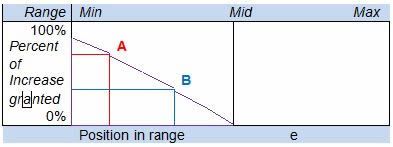Wage compression (lower-level or less-experienced employees’ pay meets or exceeds higher-level or more-experienced employees’ pay) is never easy, but deal sooner rather than later, says consultant Barry L. Brown, SPHR, CCP.
 |
The first thing to recognize about compression is that there are no secrets at work, says consultant Brown. People are going to find out what other people make. They may talk openly or it may be relatively innocent, he adds. For example, your life insurance is half of salary, and employees are sitting at lunch discussing insurance. The employee says,” I have $25,000 and I don’t think that’s enough.“ Everyone listening now knows this person makes $50,000.
Brown, of Effective Resources, Inc., delivered his tips at a recent BLR-sponsored webinar.
In general, Brown says, wage compression is:
- Self-induced in virtually every company.
- Often created when ranges change.
- Usually created when a new person is hired and is paid more than the incumbent(s).
- Something that cannot be hidden or explained away.
- Likely to result in expensive legal action.
- Something that can only be solved with money!
Of course, your compensation philosophy will dictate what you do, to some extent. The important question to ask is, How long for someone to get from the minimum to the midpoint? That’s another way of saying, how long does it take for someone to be fully productive, because those people should be at the midpoint. It shouldn’t take more than about 3 years for most jobs, Brown says.
HR budget cuts? Let us help. HR.BLR.com is your one-stop solution for all your HR compliance and training needs. Take a no-cost, no-obligation trial and get a complimentary copy of our special report Critical HR Recordkeeping—From Hiring to Termination. It’s yours—no matter what you decide.
An important part of avoiding compression is dealing with changes in the ranges. Brown offers his “triangle” approach for dealing with people below the midpoint when ranges increase.
How to determine how much of the general increase to give to employees below the midpoint.
First of all, people at or above the midpoint needn’t get part of the range increase—they are already being paid market for their jobs. And people below the minimum should move to the minimum—that’s just common sense.
For those in the range but below the midpoint, create a sliding scale triangle as shown below. It starts at 100 percent of the range increase for those at the minimum and tapers down to 0 percent for those at the midpoint.
The concept is that the people farthest below the midpoint get the largest bump. Find the person’s position in the range on the bottom line, then draw a line up to the slanted line, and read across to find the percent of the range increase. For example, A is low in the range and will receive 80 percent of the increase. B is not so low in the range and will receive 40 percent of the increase.

From compression to geographic differentials to incentive plan design, compensation and benefits is a field full of challenges. “Maintain internal equity and external competitiveness and control turnover, but still meet management’s demands for lowered costs.” Heard that one before?
From salary compression to appraisal and from hiring to firing, HR never sleeps. You need a go-to resource, and our editors recommend the “everything-HR-in-one” website, HR.BLR.com®. As an example of what you will find, here are some policy recommendations concerning e-mail, excerpted from a sample policy on the website:
- Privacy. The director of information services can override any individual password and thus has access to all e-mail messages in order to ensure compliance with company policy. This means that employees do not have an expectation of privacy in their company e-mail or any other information stored or accessed on company computers.
- E-mail review. All e-mail is subject to review by management. Your use of the e-mail system grants consent to the review of any of the messages to or from you in the system in printed form or in any other medium.
- Solicitation. In line with our general policy, e-mail must not be used to solicit for outside business ventures, personal parties, social meetings, charities, membership in any organization, political causes, religious causes, or other matters not connected to the company’s business.
Find out what the buzz is all about. Take a no-cost look at HR.BLR.com, solve your top problem, and get a complimentary gift.
We should point out that this is just one of hundreds of sample policies on the site. (You’ll also find analyses of all the HR-related laws and the current critical issues, plus downloadable job descriptions and complete training materials for hundreds of HR topics.)
You can examine the entire HR.BLR.com program free of any cost or commitment. It’s quite remarkable—30 years of accumulated HR knowledge, tools, and skills gathered in one place and accessible at the click of a mouse.
What’s more, we’ll supply a free downloadable copy of our special report, Critical HR Recordkeeping—From Hiring to Termination, just for looking at HR.BLR.com. If you’d like to try it at absolutely no cost or obligation to continue (and get the special report, no matter what you decide), go here.
